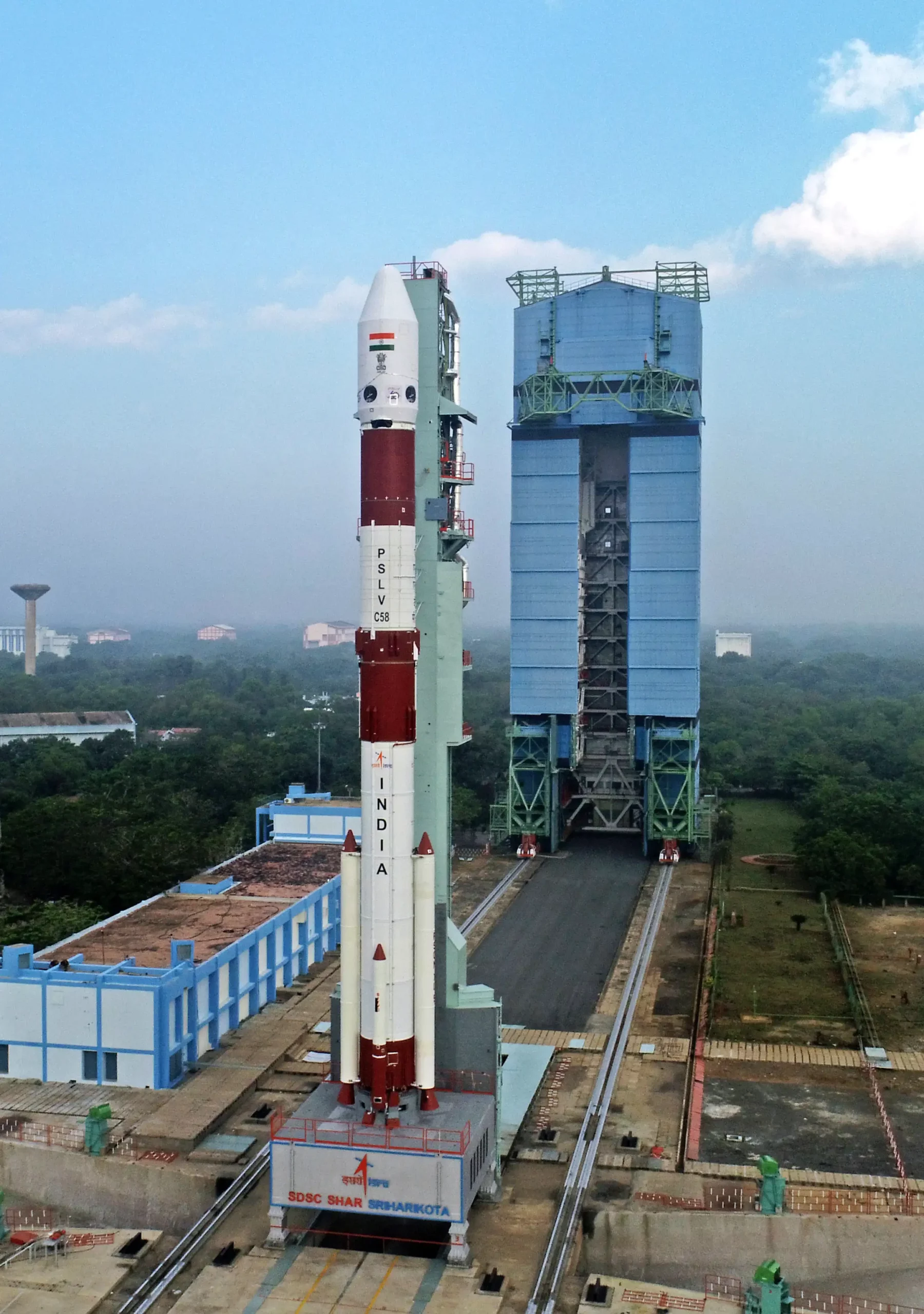The XPoSat is an Indian Space Research Organisation (ISRO) manufactured space observatory to study polarisation of cosmic X-rays. It was launched on 1 January 2024 on a PSLV rocket, and it has an expected operational lifespan of at least five years.
The telescope is being developed by the Raman Research Institute (RRI) in close collaboration with U R Rao Satellite Centre (URSC). As per ISRO, this mission will complement the efforts of US space agency NASA, which launched its Imaging X-ray Polarimetry Explorer (IXPE) in 2021 by observing space events across a broad energy range of 2-30 keV.
The objectives of this mission are:
- To measure polarisation of X-rays in the energy band 8-30keV emanating from about 50 potential cosmic sources through Thomson Scattering by POLIX payload.
- To carry out long term spectral and temporal studies of cosmic X-ray sources in the energy band 0.8-15keV by XSPECT payload.
- To carry out polarisation and spectroscopic measurements of X-ray emissions from cosmic sources by POLIX and XSPECT payloads respectively in the common energy band.
The XPoSat will study the 50 brightest known sources in the universe, including pulsars, black hole X-ray binaries, active galactic nuclei, neutron stars and non-thermal supernova remnants. The observatory was placed in a circular low Earth orbit of 500–700 km (310–430 mi). The payloads onboard XPoSat will observe the X-Ray sources during its transit through the Earth’s eclipse period.
PSLV (Polar Satellite Launch Vehicle)
The PSLV is the workhorse of the Indian Space Research Organisation (ISRO). It’s a reliable and versatile medium-lift launch vehicle that has been instrumental in India’s space program for over three decades.
Capabilities:
- Can carry payloads up to 1,750 kg to Sun-synchronous Polar Orbits (SSPO) at an altitude of around 600 km.
- Can also launch 1,425 kg of payload to Geosynchronous Transfer Orbit (GTO), which is a stepping stone for reaching Geostationary Orbits (GEO) at 36,000 km.
- Has successfully launched satellites for various purposes, including Earth observation, remote sensing, communication, navigation, and scientific research.
Features:
- Four stages, each powered by solid or liquid engines:
- First stage: Uses solid propellants and provides the initial thrust.
- Second stage: Uses liquid propellants and takes the payload out of the atmosphere.
- Third stage: Also uses liquid propellants and injects the payload into the desired orbit.
- Optional fourth stage (PSLV-XL variant): Can be added for additional GTO capability.
- Cost-effective: Known for its reliability and affordability, making it a popular choice for launching satellites.
- Versatile: Can launch different types of satellites in various configurations.
Achievements:
- Launched over 345 satellites from 36 countries as of June 2022.
- The PSLV has also launched 46 Indian satellites.
- Holds the record for most satellites launched on a single mission: 104 satellites in 2017.
- Played a crucial role in establishing India’s own navigation system, the Indian Regional Navigation Satellite System (IRNSS).
- Successfully launched the XPoSat, a space observatory for studying X-ray polarisation, on January 1, 2024.
Circular Low Earth Orbit (LEO)

A circular low Earth orbit (LEO) is a path taken by a satellite or spacecraft around Earth, characterized by:
- Altitude: Ranging from 250 to 2,000 kilometres (155 to 1,242 miles) above Earth’s surface. This is roughly one-third of Earth’s radius.
- Orbital period: Completing one full orbit in 128 minutes or less, meaning it circles Earth at least 11.25 times per day.
- Shape: Perfectly circular, meaning the distance between the satellite and Earth remains constant throughout the orbit. This is in contrast to elliptical orbits, where the distance varies.
- High orbital velocity: Due to its close proximity to Earth, satellites in LEO travel at speeds around 7.8 kilometers per second (4.8 miles per second). This translates to approximately 28,000 kilometers per hour (17,000 miles per hour).
- Short visibility from Earth: Because of their high speed, satellites in LEO only remain above a particular location for a short time, typically around 20 minutes.
- Wide range of applications: Circular LEOs are ideal for various applications due to their:
- Frequent coverage of Earth’s surface: They can quickly revisit the same area, making them suitable for Earth observation, remote sensing, and communication.
- Accessibility: They are relatively easy and economical to reach compared to higher orbits.
- Examples of satellites in circular LEO:
- International Space Station (ISS)
- Hubble Space Telescope
- Many Earth observation satellites, like Landsat and Sentinel-2
- Communication satellites in constellations like Starlink and Iridium
 Chinmaya IAS Academy – Current Affairs Chinmaya IAS Academy – Current Affairs
Chinmaya IAS Academy – Current Affairs Chinmaya IAS Academy – Current Affairs
